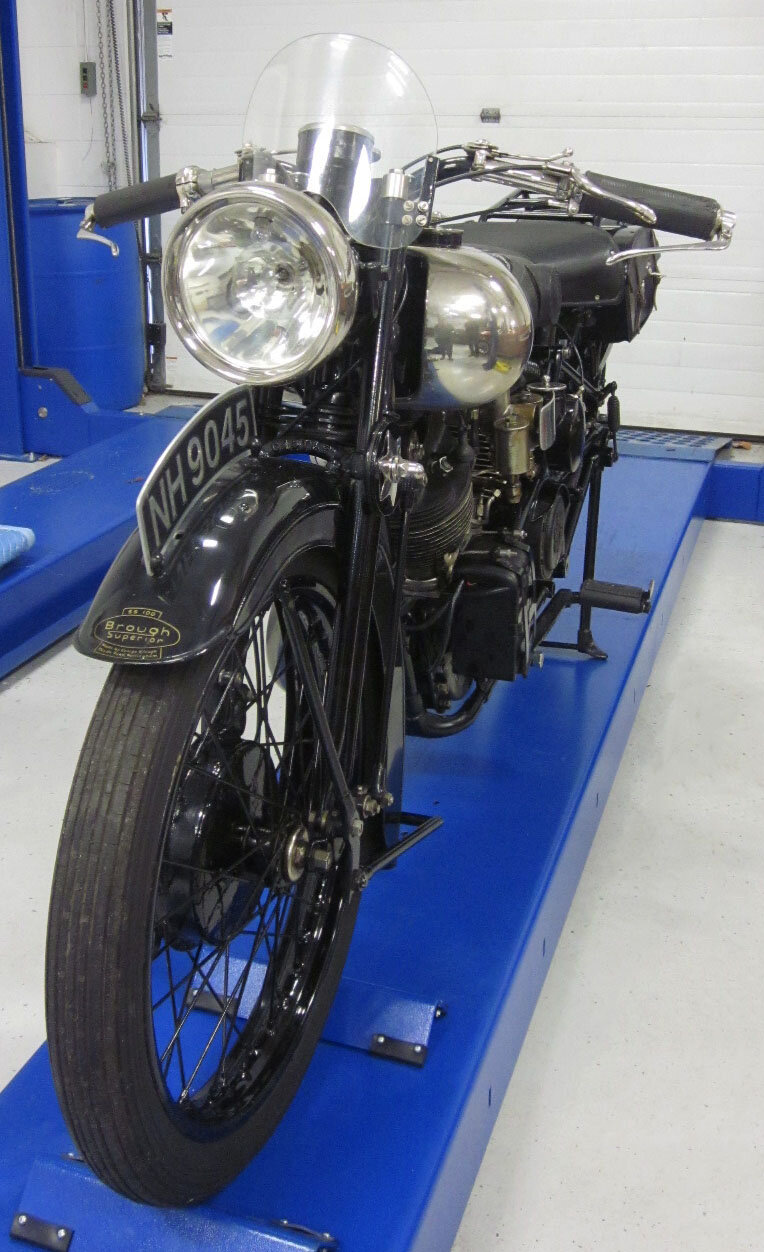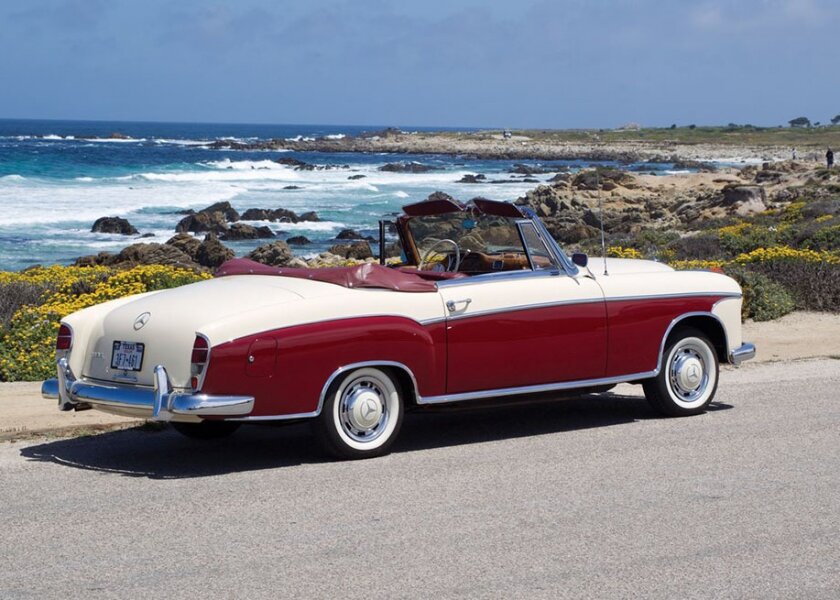1929 Brough Superior 100SS Motorcycle
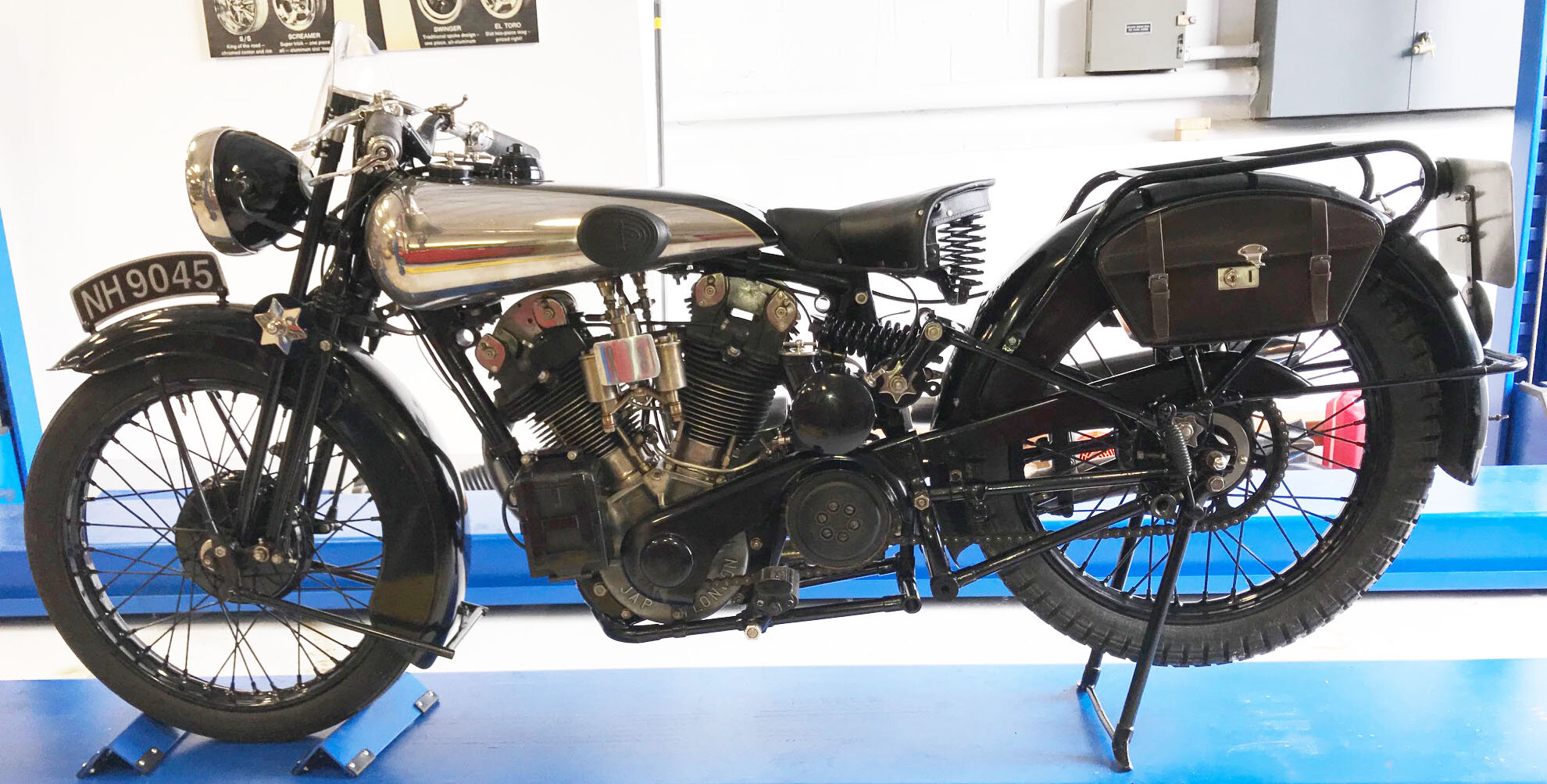
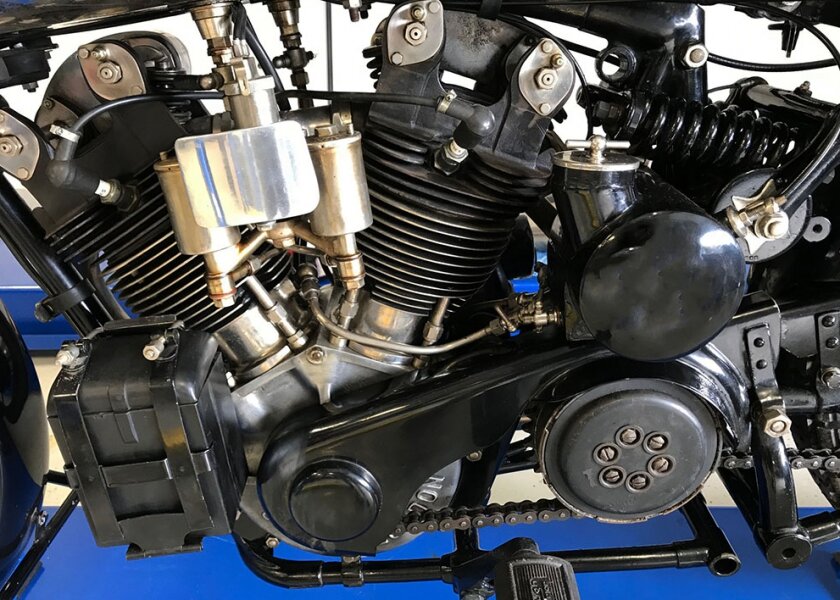
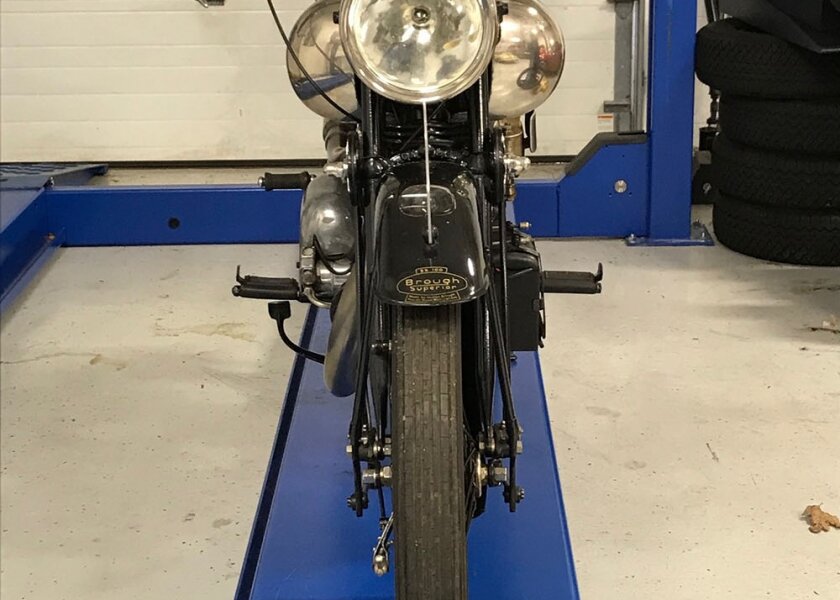
Specifications
Engine: OHV 50-degree Twin-cam KTOR JAP (made by J. A. Prestwich) V-twin
Displacement: 998 cc (60.9 cu. in.)
Horsepower: 50 bhp (37 kW)
Transmission: Sturmey-Archer 4-stud 3-speed hand-change gearbox
A Little History
The Brough Superior SS100 (Super Sports) was designed and built by George Brough in Nottingham, England in 1924. The first custom motorcycle with components chosen from many different suppliers, the SS100 was designed to meet specific customer requirements. All bikes had a guarantee that they were capable of 100 mph (160 km/h). In 1928, George Brough broke his own world record with 130.6 mph (210.2 km/h).
At £200 (equivalent to about $15,000 today), they were advertised by Brough as the “Rolls-Royce of Motorcycles.” The term was coined by a magazine road tester in his review of the bike, and Brough eventually obtained explicit permission to use it after a Rolls-Royce executive toured the Brough Superior factory.
Every owner was encouraged by Brough to suggest their own ideas for developing the SS100, which meant that almost all his motorcycles were uniquely hand-built and the design continually evolving.
Development on all Brough Superiors was stopped during the Second World War, when the factory was turned over to war work.
T. E. Lawrence (known as Lawrence of Arabia) bought one of the first SS100s in 1925 having previously owned three Brough SS 80s.
The crash that would end Lawrence’s life came while riding another SS100, on a narrow road near his cottage near Wareham in 1935. The accident occurred because a dip in the road obstructed his view of two boys on bicycles. Swerving to avoid them, Lawrence lost control and was thrown over the handlebars. He was not wearing a helmet and suffered serious head injuries that left him in a coma; he died after six days in hospital. One of the doctors attending him was a neurosurgeon, who began a long study of what he saw as the unnecessary loss of life by motorcycle dispatch riders through head injuries. His research led to the use of crash helmets by both military and civilian motorcyclists.


